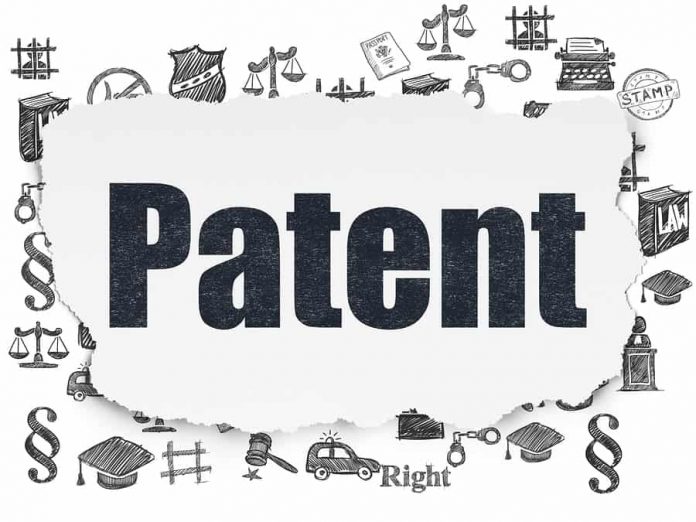This article is written by Gautam Chaudhary, a law student at Chanderprabhu Jain College of Higher Studies and School of Law, GGSIPU. The present article elucidates the meaning of utility patents and their position in India.
It has been published by Rachit Garg.
Table of Contents
Introduction
An invention shall have the same meaning and importance for every inventor whether it is a million-dollar company or a small one as long as it has the requisite of being new and is of industrial application. Article 27(2) of the Universal Declaration of Human Rights provides that everyone has an equal right to protect his invention if he is the sole author of the same. The same is the principle in the Indian Patent Law, which is to protect and prevent others from commercially exploiting the invention. However, this protection can only be obtained by the industry giants who have the resources to avail the same such as patent registration fees and patent attorneys etc. In this scenario, small and medium-sized enterprises are left with no aid to protect their inventions, which are true of useful value and of commercial potential, since the existing patent procedure is highly complex in nature and costly too. For the aid of these enterprises, utility patents can be of great aid, which can support the creation of inventions by these small players in the market. Therefore, the present article deals with utility model patents and is backed by their key features to highlight their use in the Indian jurisdiction following their position in India.
Utility patents
The paramount motive for the grant of a patent is to give the inventor exclusive authority over his invention and to bar others from commercially using or exploiting it. Utility patents or utility model patents are just like usual patents but differ in terms of cost, innovation standards, and filing procedure. Utility patents allow the sole inventor to prevent anyone from commercially using his invention without his authorisation for a period of time. These types of patents are granted for a short period of time compared to normal patents, and because of this reason, they are also known as “short-term patents” in various jurisdictions throughout the world. A utility patent protects how the product or invention works or operates since the term ‘utility’ literally means the way of use. It is given for a product, matter, machine, manufacture, or composition of matter, or a new and useful improvement thereof.
Utility Patents are relatively short-term rights granted for inventions that can be mechanical, electrical, or chemical in nature, and they protect the invention in the way in which it is used. These inventions may not qualify for the higher standards of stringent criteria such as inventive step, novel and non-obviousness, but are inventions in their own consideration. Like patents, the utility model is an exclusive right granted to an invention. This right allows the inventor to prevent others from commercially using the protected invention without his consent and permission for a limited period of time, that is to say, 6 to 10 years, which may differ subject to jurisdiction. It is very similar to patents and is often referred to as “petty patent” or “innovation patent” as they require less stringent qualifications and their duration is shorter than that of patents.
In the case of utility patents, any invention would be eligible to get protection when its characteristics and fundamentals showcase some utility or usefulness, which can be said to be the same when a common person, merely looking at the product or using it, figures out its potential for the relative work as to what purpose or motive it can be used for along with its commercial potential. The invention must also be specific and direct in nature to meet the above-mentioned requisites.
Features of utility patents
The following are the features of utility patents:
Absolute right
As mentioned above, utility model patents give the owner an absolute right, which prevents others from commercially or otherwise using the invention. Through this, the patent and the invention created stay exclusively intact with the true creator.
Product or process
Utility patents protect the product and process both. In other words, it protects the product invented or the process through which the product is invented. The process can be said to be the technique or specialised manner in which the product is made.
Low novelty
Section 2(1)(l) of the Indian Patent Act, 1970 refers to ‘novel’ as something which has not existed in the document by publication or used in the state or in the world before the filing of the patent application. This means that if a person wants to patent his invention under the Act, the invention must be new to such an extent that it must not exist or be used in the world or the state.
The novelty requirement for the grant of a patent in I.P. law is one of the most essential requisites. Novelty, in simple terms, means something created that should not be in the public domain or in the world prior of the same nature. It must be new in the entire state and must be something which is not seen by anyone in the public domain, whether in the product or the process. In the case of utility patents, the standard for novelty is comparatively lower as compared to normal patents. This means the inventor can now get a utility patent after improving it marginally.
Marginal improvement
When an inventor or creator of a product introduces little improvement to the product as to its use or for other factors, it is known as marginal or incriminating innovation. Utility model patents allow the inventors to have the exclusive right over products which has been improved a little. This is not the case with patents since they require novelty to a greater extent.
Small-time period
The applicability period for a utility model is different in each jurisdiction. In Germany, it is for 10 years, whereas in France, it is for 6 years. Therefore, it can be said that utility patents are for only a small period of time for a minor improvement in the product’s technology.
Difference between patents and utility patents
| Points of difference | Patents | Utility patents |
| Novelty levels. | High novelty and innovation standards are required that are strict in nature, along with the commercial potential for protection. | The only requisite, in this case, is the novelty of the product. Less or absence of inventive steps is acceptable. |
| Technical improvement. | The invention must be new, as such; it must not be in the public domain prior to the filing of the patent application. Only new | Marginal or minimal improvement is acceptable for the grant of utility model patents. |
| Patent registration fees. | Patents are expensive in cost. | Utility patents are cheaper in cost. |
| Time period. | The term is 20 years from the date of filing. | The term varies jurisdiction-wise, generally, it lasts for 6 or 10 years. |
| Country-wise coverage. | Patent protection can be availed in all the major countries. | Utility model patents are not available in all countries since their existence depends upon the nature and level of technology the country possesses. |
| Allotment period. | Patents are granted after more than 2 to 3 years. | Utility models are granted only after 6 to 12 months. |
Conditions for granting utility patents
Utility model patents are granted only when the applicant successfully fulfils the following requisite requirements:
Novelty
In Bishwanath Prasad Radhey Shyam v. Hindustan Metal Industries (1978), the Supreme Court held that the fundamental principle of the patent law is that a patent is only granted for an invention which is novel or new.”
Therefore, it can be comprehended that the applicant or inventor who has created a certain product may have the exclusive right to prevent others to use, manufacture and sell his invention if his invention contains novelty in its very matter. The term ‘novelty’ here, as mentioned earlier, means anything which is new to an extent that it does not form a part of the state of the art and where no one in the public domain has any knowledge of such an invention because of its earlier non-existence and if the said condition is not fulfilled, then the patent shall not be granted. This is the first essential condition for the grant of a patent.
Utility
The literal meaning of utility is the state of being useful or beneficial. Thus, in order to obtain a utility patent for an invention, the product must be useful in its true sense. In Indian patent law, this usefulness is called industrial application. The capacity of an industrial application refers to the capacity of the said invention to be used in the industry for the required purposes.
In relation to the above-mentioned statements, it is relevant to cite the case of Cipla Ltd. vs F.Hoffmann-La Roche Ltd. & Anr. (2015), where the Hon’ble Delhi High Court held that an invention for grant of the patent must be capable of industrial application, i.e., the capacity of the invention to be made and to be used by the users in the industry.
Why do you need to apply for utility patents
Due to the utility patent’s nature and key benefits, an individual or small or medium business must file a utility patent for the following features:
- Inventions that require a minor improvement in regard to their fundamental or overall structure or in regard to their use.
- Where the inventor requires faster protection for his created invention, he shall go for utility model patents.
- If the inventor has introduced a small amount of inventiveness in his product, he should register the said product for a utility model patent.
- When the inventor is a small or medium enterprise player where he lacks the hefty patent fee and when the invention budget is at a minimum, he should go for utility patents.
Position of utility patents in India
Utility patents do not find their place in Indian jurisdiction because the Indian Patent Act, of 1970 does not provide any provision for this form of protection. However, there’s a debate in place with regard to whether to introduce the concept of utility patents in India, which is influenced by the various incriminating factors provided further.
The first mention of such short-term protection was found in the first draft of the National IPR Policy of 2014 released by the six-member committee referred to as the “IPR think tank” which was formed by the Department of Industrial Policy and Promotion headed by Justice Prabha Sridevan, former judge at Madras High Court and Chairperson of Intellectual Property Appellate Board. Even after the introduction of the utility model through this policy in 2014, no formulation of utility patents-related policy is made into effect to include it in the Indian Patent system to date.
Since utility patents mainly protect the utility or use of the invented product in some new manner, the existing Indian Patent laws with regard to the use of products seem to be in definite denial of the same because Section 3 (d) of the Patent Act, 1970 provides that mere discovery of the new use of the known substance or the machine does not entitle the invention to be patented. The above-mentioned provision of the Indian Patent Law completely throws the concept of utility patents out of the picture, which can be proved to be of immense loss to India’s intellectual property regime and economy.
Statistically, as per the Annual Report 2021-22 issued by the Ministry of Micro, Small and Medium Enterprises, the Government of India during the period 2015 to 2016, India had 633.88 lakh SMEs giving employment to 11.10 crore jobs, whereas the micro sector, with an estimated 630.52 lakh jobs, gave the source of earnings to 1076.19 lakh persons. SMEs and MSEs are constantly acting as the backbone of the economy by contributing to it every day. SMEs and MSEs are continuously contributing to India’s economy, which amounts to one-third of its GDP. The highlighted data is to showcase the economic impact these enterprises have on the economy.
Since utility patents can, without any uncertainty or doubt, be of great aid to protecting the small and medium inventions that these enterprises create. The present Indian patent grant requirement explicitly excludes the small and medium players of the innovation market because the patent fees and procedures are highly complex and costly in nature. Moreover, Section 3(d) explicitly excludes the mere new way of using a product to be patented. Thus, these enterprises are left with no option than to survive in the competition without any protection for their created invention. Therefore, it has become difficult for these medium and small enterprises to protect their small inventions through this form of protection. By having the utility model encouragement would be given to the farmers and these small players in the market which may generate an increased source of income ultimately contributing more to the economy.
In relation to the international treaties in the world in relation to these models, India can take the model of utility patents from the Paris Convention for the Protection of Industrial Property since it is the international treaty that provides for utility models, as the TRIPS agreement does not provide for these patents. It could also form legislation subject to the Patent Cooperation Treaty, which enables the contracting party to the treaty to regulate the relative legislation for utility models.
Now, looking at the achievement of the I.P awareness mission carried out by the government, where the ministry has reached a million students and professionals in generating awareness regarding intellectual property rights, it would be considered the best time to introduce the utility model since it would be beneficial for these SMEs and MSEs to use the particular model while having fresh knowledge about India’s intellectual property rights.
In terms of economic advancement, the addition of utility patents can truly act as an effective measure for the government’s mission, i.e., “vocal for local,” since it will directly act as an aid for the local business owners in the market to enter into the world of innovation, where they will be able to protect their invention. This would result in foreign exports of the products with marginal inventiveness, thereby taking the economy to an uplifted level. Overall, this would act as a means of encouragement for them because of its low inventiveness requirement coupled with low registration fees.
Global perspective of utility patents
Unlike the Agreements on trade-related aspects of intellectual property rights, the Paris convention, one of the first intellectual property treaties signed on March 20, 1883, provides for the concept of utility model patents under the category of industrial property. The convention, through Article 11, provides that the union members of the convention, in conformity with their national territorial legislation, grant temporary protection to inventions and utility models. Apart from this particular convention, utility patents do not find their place in any of the other conventions.
Numerous countries across the globe provide utility patents for innovations. One of the biggest economies in the world, i.e., the United States of America, is also among the providing countries, followed by Germany.
Section 101 of the United States Code under Title 35 defines utility patents, stating that whoever invents or discovers any new and useful process, the machine, manufacture, or composition of matter, or any new and useful improvement thereof, may obtain a patent by applying to the United States Patent and Trademark Office with an abstract, drawings, a detailed specification, and the patent claims. In American patent laws, utility patents refer to the technological protection for the creation of a new or improved and useful product, process, or the machine that has the requirements of having the inventions be novel, not obvious, statutory, and useful. Section 101 of the code allows the creator of an invention to protect both the product and the process as well. Utility patents are issued by the United States Patent and Trademark Office and have a duration of 20 years wherein as per Section 41(b) this period the patent holder has to pay a maintenance fee from time to time.
Concerning the German utility patent model, the German utility model law under Section 1 provides that a utility patent shall only be granted to new inventions that involve an inventive step and are capable of industrial application in the industry. It is considered that the legislation and the framework on utility patents in Germany are mainly for small and medium-sized enterprises to enable them to obtain technical protection for their invention through which they can protect their invention for 10 years if only it has novelty, i.e., it does not exist in the state of art, technical advancement other than the pre-existing technology, and can be used and manufactured in the industry. The German patent and trademark office is the issuing body for utility patents and handles all the applications regarding utility patents. However, it is to be noted that the German patent and trademark office does not examine the novelty and inventive step in the patent application; it only handles the documentation in the applications.
Conclusion
A country’s innovation can prove to be a major influencing factor for its well-being. Through its beneficial nature, it attracts aid such as foreign direct investment, employment, and international recognition. India in present times has become one of the major economies in the world. But its focus has been solely on big enterprises in the economy. It’s just a hypothetical vision as to what it will achieve in the future if it also enables small enterprises to protect their original inventions. The utility model is a must requisite for the SMEs and MSEs operations in the Indian jurisdiction just to enable the innovators to protect their invention through marginal improvements with fewer registration fees. The model would give the economy a boost from a new domain, giving SMEs and MSEs a sense of protection that would motivate them to invent more and thereby introduce the innovation spirit among these players as well. Therefore, taking the economical status to another level.
Frequently asked questions (FAQs)
What is the purpose of utility patents?
Unlike normal patents, which protect the general nature of the product by barring others from selling, manufacturing, or using the invention, utility patents only protect the way or manner in which the product is used.
What can be patented under utility patents?
Under the utility model, any new process, machine, or manufacture or any new improvement proved to be of commercial value can be patented. What has to be carefully looked at is the new method of improvement in the existing product, which is obviously of commercial value.
Can the utility model support the “vocal for local” mission of the central government?
Looking at the numbers of SMEs and MSEs in India, the introduction of the utility model in the Indian jurisdiction would prove to be undoubtedly in support of the “vocal for local” mission as it would give these players the right to protect their commercially rich inventions through which they would be able to monetise their protected intellectual property. Therefore, the same would eventually dampen the inventive spirit among these enterprises.
References
- Utility patents by Investopedia
- Utility Patents & Its Position In India
- Need for Utility Patents in India
- Utility Model In India: Soon To Be A Reality – Patent
- India: Utility Model Patent: Road Ahead
Students of Lawsikho courses regularly produce writing assignments and work on practical exercises as a part of their coursework and develop themselves in real-life practical skills.
LawSikho has created a telegram group for exchanging legal knowledge, referrals, and various opportunities. You can click on this link and join:
Follow us on Instagram and subscribe to our YouTube channel for more amazing legal content.
 Serato DJ Crack 2025Serato DJ PRO Crack
Serato DJ Crack 2025Serato DJ PRO Crack












 Allow notifications
Allow notifications


